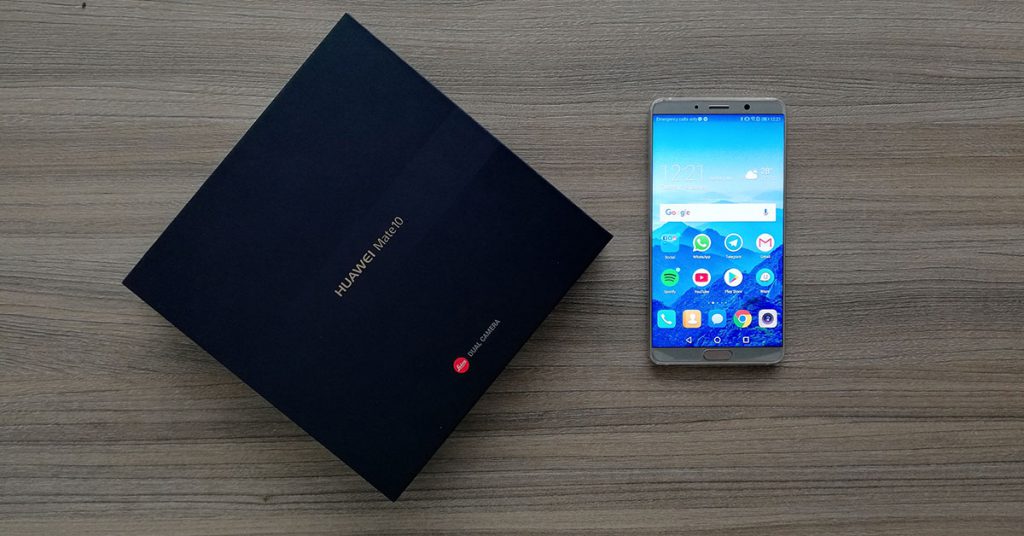- The Huawei Mate 10 arrived in October 2017 alongside the pricier Mate 10 Pro with beefier specs.
- It touts a Hisilicon Kirin 970 processor, 4GB of RAM, and 64GB of onboard memory.
- It also comes armed with 12MP dual rear-facing cameras that enables features such as portrait mode and wide aperture.
- Currently retails for approximately RM2.7k online.
When Huawei released the Mate 10 in October last year, it came overshadowed by its bigger, faster, and more expensive sibling Mate 10 Pro, which retails at around RM3.1k. While everyone proceeded to obsess over the Pro—with its larger AMOLED touchscreen, larger internal storage, and faster memory—its lower specced baby brother was left largely ignored.
So when the time came to review the Mate 10, I gladly snatched at the chance to see if a phone that was considered a poor man’s flagship could at least do a job as a decent everyday driver.
Spec Overview
The Mate 10 comes equipped with a Hisilicon Kirin 970 processor, 64GB of internal storage, 4GB of RAM, and an IPS LCD capacitive touchscreen, all in addition to a 12MP Leica rear-facing dual camera and a 8MP front-facing camera. Compared with the Mate 10 Pro, most of the specs are pretty much similar save for the Pro having a better screen, quicker RAM speeds, and a larger internal storage.
But from the viewpoint of the everyday user, these specs mean naught in the context of daily usage. While I can tell you that most of these internals are comparable to the other high-end flagships out on the market, it’s how the phone performs the routine tasks thrown at it that matters most.
So I think it best if we jumped right ahead to the Mate 10’s performance in the wild.
Build Quality
On the back, The Mate 10 comes in a glass enclosed body that curves slightly at the sides. A dark silver strip runs horizontally along where the dual camera sits and completes the overall classy aesthetic.

In front, the 5.9 inch LCD display with its thin bezel sits above the fingerprint scanner. At the sides you’ll find the power button, volume rocker, and dual SIM card slots. All standard fare.


On the bottom, there’s the USB-C port for data and charging and on top you’ll find the much maligned 3.5mm headphone jack that doesn’t come with the Mate 10 Pro, giving the little sibling a one-up over its more expensive brother.
Overall, the feel in the hand is solid, and its weight—while verging a bit on the heavy side at 186 grams—shouts premium. For those with larger hands like me, the phone feels just about right.
Performance
With the Mate 10 arriving with 4GB of RAM in addition to its octo-core Kirin 970 processor, everyday performance was nothing short of satisfactory.
Huawei’s EMUI interface worked fine (despite the customary bloatware) with all my daily applications such as Facebook, Spotify, Waze, and WhatsApp running as smooth as I wanted. And even apps with more demanding features like games and video streaming ran pretty well for the most part.
I used the phone as my daily driver for 10 days, while intentionally placing a heavy amount of load and stress on the system. I refrained from closing apps to speed things up, and constantly had around 20 apps open at the same time. These included resource-heavy apps like Netflix and YouTube and games like Mobile Legends.
Throughout the 10 or so days of use, I found myself only having to restart the device twice due to issues with apps stalling or not refreshing. There was also minimal lag, with an app crashing only once every few days (note that I also switched through the apps frequently).
Another thing I liked about the Mate 10 was its zippy fingerprint scanner. There was no problem whatsoever when it came to recognizing my thumb prints, and this made getting into the phone a complete non-issue.
Camera
Now as one who seldom takes photos, having a phone with dual rear-facing cameras was a revelation to me.

The dual 12MP Leicas performed very satisfactorily, with colours coming out strikingly close to the real-life subjects. There was also minimal noise in most of the shots, indicative of good image processing.
I found that with even with just barely decent lighting, most shots managed to come out looking crisp and well-lit, causing my workmates to ask me for photo-taking favours or to outright borrow the Mate 10 for work-related shots.


It was also nice to be able to simply pick up and point towards objects while allowing the phone to automatically detect the types of shots that it was about to take.
The camera could easily tell when we were taking night shots, food shots, or even group photos, and adjusted itself accordingly.

Selfies taken with the front facing 8MP camera also turned out decent enough, with colour accuracy and sharpness pretty much on point.
Another feature that worked out nicely was the portrait mode that’s now the main selling point of so many dual-camera flagships out there. The photos I took in this mode managed to include the much vaunted bokeh that was exclusive to DSLRs until the last couple of years.
The only catch with the portrait mode was the reliance on face-detection for it to work, rendering it useless if subjects turned away or had their faces covered.

The only part of the camera that was a bit of a letdown was the way it took night shots.
Edges were slightly unrefined, and some shots came out a bit overexposed, although I feel that with some time fiddling with the aperture and shutter speed in manual mode, these can be easily fixed.

Verdict
The Huawei Mate 10 feels like a flagship smartphone in every sense of the word. Even if brushed aside in favour of the Pro, its specs still rival some of the best flagships out there. With a retail price of around RM2.7k, the Mate 10 goes for around RM400 less than the Pro despite only being behind in speed and display quality.
In the end, I fully enjoyed my time with the Mate 10, and have no problems recommending it to those looking for a reasonably priced phone with relatively high-end internals and an overall great camera.
















